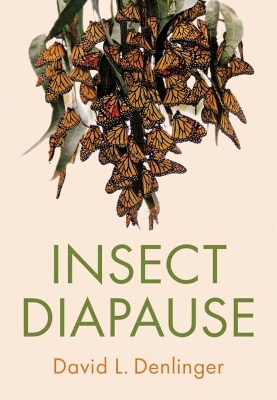
Insect Diapause
Cambridge University Press (Verlag)
978-1-108-49752-7 (ISBN)
Our highly seasonal world restricts insect activity to brief portions of the year. This feature necessitates a sophisticated interpretation of seasonal changes and enactment of mechanisms for bringing development to a halt and then reinitiating it when the inimical season is past. The dormant state of diapause serves to bridge the unfavourable seasons, and its timing provides a powerful mechanism for synchronizing insect development. This book explores how seasonal signals are monitored and used by insects to enact specific molecular pathways that generate the diapause phenotype. The broad perspective offered here scales from the ecological to the molecular and thus provides a comprehensive view of this exciting and vibrant research field, offering insights on topics ranging from pest management, evolution, speciation, climate change and disease transmission, to human health, as well as analogies with other forms of invertebrate dormancy and mammalian hibernation.
David L. Denlinger is one of the world's leading researchers on insect diapause. He is a Distinguished University Professor, and Professor Emeritus of Entomology, at the Ohio State University, USA. He is a member of the National Academy of Sciences, a Fellow of the Entomological Society of America and an Honorary Fellow of the Royal Entomological Society. Professor Denlinger's current laboratory research focuses primarily on molecular mechanisms involved in insect overwintering. His interests range from the use of clock genes to perceive environmental signals through the endocrine and molecular events that result in expression of the diapause phenotype. He has received numerous awards for his research including the Gregor Mendel Medal from the Czech Academy of Sciences (2006), the Antarctic Service Medal (2006), and the ICIPE Achievement Award (2020).
1. Confronting the challenges of a seasonal environment; 2. What seasons are being avoided?; 3. Variation in the diapause response; 4. The cost of diapause and some diapause alternatives; 5. Interpreting seasonal cues to program diapause entry; 6. Preparing for diapause; 7. The diapause state; 8. Ending diapause and reinitiating development; 9. Molecular signaling pathways that regulate diapause; 10. Genetic control of diapause; 11. Evolution of diapause; 12. Wider implications; References; Index.
| Erscheinungsdatum | 04.02.2022 |
|---|---|
| Zusatzinfo | Worked examples or Exercises |
| Verlagsort | Cambridge |
| Sprache | englisch |
| Maße | 174 x 251 mm |
| Gewicht | 1010 g |
| Themenwelt | Naturwissenschaften ► Biologie ► Evolution |
| Naturwissenschaften ► Biologie ► Zoologie | |
| ISBN-10 | 1-108-49752-7 / 1108497527 |
| ISBN-13 | 978-1-108-49752-7 / 9781108497527 |
| Zustand | Neuware |
| Haben Sie eine Frage zum Produkt? |
aus dem Bereich


